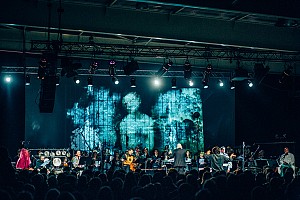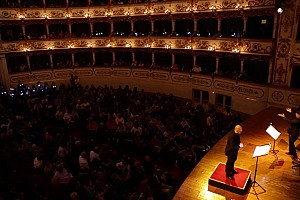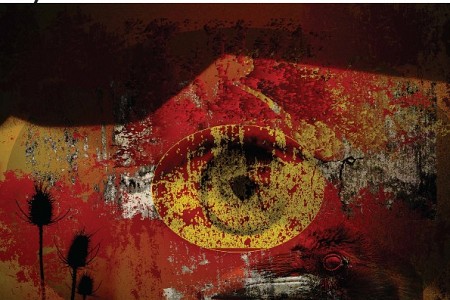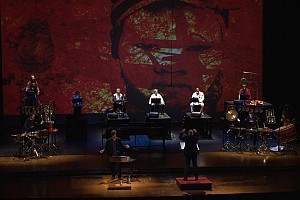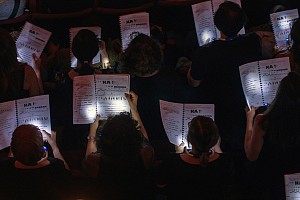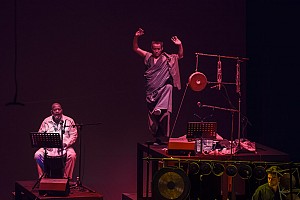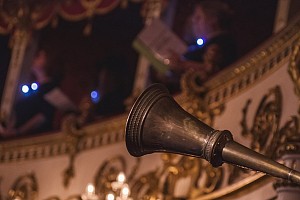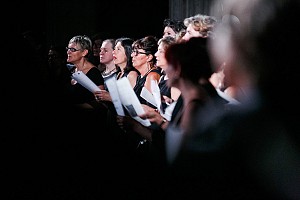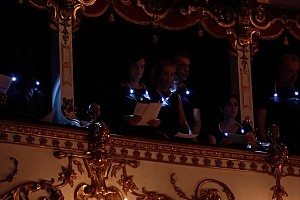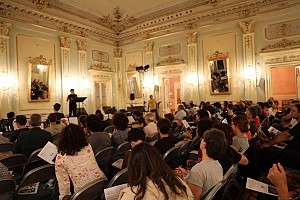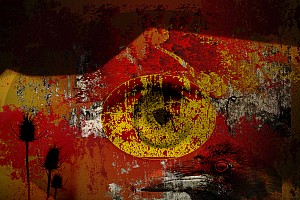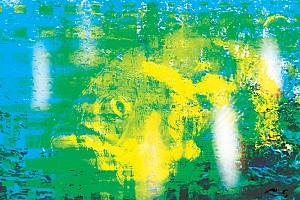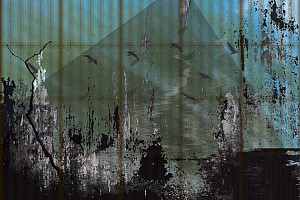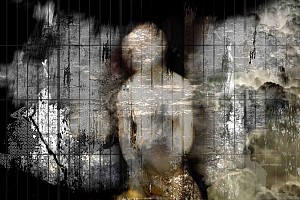Warsaw Autumn Festival 2014, Premieres Warsaw Autumn & MiTo SettembreMusica Milan, 2014; VERSION 2 - Reggio Emilia Festival Aperto 2016
Vocal soloists, percussions soloists, Crowd Music ensembles
“REKA deals with roots and cultural backgrounds, but also the aesthetic background and the possibility of recreating this through voices. (...) this is a work of the unique community, not of the unique individual.”
(Tadeusz Wielecki, Director of Warsaw Autumn Festival in an interview for Gazeta, Poland, 2014)“Our voices are like fingerprints - a sum of who we are, our history and substance. At the same time, in a multitude the individual’s unique sound is dispersed, a quantity rather than a quality. Yuval Avital takes a different position, pursuing an approach to the ‘vocal crowd’ to bring out its unique collective beauty and visionary poetry.”
(La Stampa daily, Italy, 2016)“An important provocation to the old divisions of Euro-centric music, created with the crowd and the voices of the soloists in a counterpoint of great emotion and strength”
(La Repubblica daily, Italy, 2014)
DOWNLOAD REKA VOCAL CROWD score.pdf
DOWNLOAD REKA PERCUSSIONS CROWD score (italiano).pdf
Sample score - Download
REKA (‘background’ in Hebrew) combines a large crowd of voices composed of local residents of the city in which the performances take place, six extraordinary soloists of rare ancient vocal techniques - from a Tibetan Bön Lama to the Tenores guttural singing of Sardinia (Unesco World Heritage), two virtuoso percussion soloists playing a complex set of gongs and ‘string piano’, and dozens of percussionists from all backgrounds recruited from local groups, schools, cultural centres and so on.
All these, co-ordinated by two conductors and accompanied by fascinating projections from selected parts of the graphic score, form an immersive 90-minute performance, a blend of performance art, a total opera and a ritual, uniting ancient traditions with contemporary music and theatre to a unique collective experience that invites everybody in.
First Commissioned in 2014 by Warsaw Autumn Festival, Yuval Avital’s REKA (Hebrew: “background”) is a large-scale sonic experiment that extends the human voice - the most essential sonic tool of all - to create a collage of techniques, aesthetics, shouts and whispers. A second element is the drum, the first musical instrument created, present in all cultures and styles.
The six vocal soloists in REKA represent a selection of some of the world’s most extraordinary masters of rare vocal traditions and vocal innovators. Some of them are renowned soloists of international fame, some are a part of UNESCO Masterpieces of the Oral and Intangible Heritage of Humanity, some are religious leaders, some are important singers in their community, fulfilling their traditional role as musical accompanies for their people in the cycle of life and death.
They are characterized by ancient roots as well as by a strong identity value in the contemporary context; however, it is interesting to remark that all them, apart from the Sardinian, bassu, live outside their original countries, some due to their career, some to exile, some to immigration. This fact can be a solid contradiction to the “exotic” approach to multiculturalism, which pre-assumes “remote” rather than diverse or complimentary.
Anyone can participate in REKA, joining the ‘Crowd’ sections by using her/his voice as an instrument, with no prior musical knowledge needed; or as part of the ‘Drums’ crowd, where all skill levels, styles and cultures co-operate.
A User-Friendly Score using text and graphic elements to suggest sounds, also using imitations of nature, non-linguistic sounds, and onomatopoeia, allowing for complex results from simple means. The vocal crowd in REKA is a gigantic anti-choir: hundreds of local citizens to the performances (Warsaw in 2014, Reggio Emilia in 2016) comprise a massive organism of sound. No prior musical experience is needed to participate.
VIDEOS “SHARE YOUR VOICE WITH ART"
Visual art by Yuval Avital within REKA ©2016
REKA TABLES
BASIC GUIDELINES OF VOCAL CROWD MUSIC: UNITY AND DIVERSITY
01. There is no need to know how to read music, or even to have a previous musical experience to be a part of the Crowd.
02. There is no need to be “in tune”, since absolute pitch would not be used at all.
03. All the components of the crowd part should be easy and could be taught in a few minutes.
04. All score components should be composed of a simple textual explanation and/or a graphical indication.
05. All conducting gestures should use extremely simple to comprehend.
06. There should not be a "right" or "wrong" way to perform an element.
07. COMMUNICATION IS MORE IMPORTANT THAN INTERPRETATION.
08. THERE IS NO MAXIMUM NUMBER OF PARTICIPANTS.
09. EVERYONE WHO WISHES TO BE A PART OF THE CROWD CAN BE INCLUDED.
10. When performing:
- Listen all the time.
- close your eyes if needed to reach concentration.
- BE WITH, NOT AGAINST.
- Better to do less than too much.
- Search for order.
- Strive for beauty.
- Enjoy.
The principals of the percussions crowd part:
UNITY AND DIVERSITY
SOUND AND BEAT
ACTION AND REACTION
VOICE AND INSTRUMENT
This is the summary of the role of the percussions crowd within REKA V2. Three couples of words which should be better explained:
-
UNITY AND DIVERSITY: Each element of the percussions part regards ALL percussions players and in a short time of rehearsals one of the most challenging tasks will be to create a united sound. By this it's meant a collective interpretation which is a result of the different percussions, the different percussionists and their background, but also the challenge of listening and feeling the others in order to express each one’s diversity, but also to strive for unity at the same time.
-
SOUND AND BEAT: They are probably the most fundamental functions of the percussions. With a given beat you will be asked to form percussive patterns (or grooves, or rhythms), starting with just holding the beat till frenetic playing of precise parts that will be taught during rehearsals. But many parts will be based on sound, unmeasured sections or tremolo sections in which the key will be to create a sonic background(=REKA in Hebrew) for others and as an artistic element by itself.
-
ACTION AND REACTION: Each element represents an action which should bring the richest, most unexpected and beautiful result. However, there are few reactions that will be asked during the score, especially reactions to the two percussions soloists on the stage: throughout your part you will find elements such as “echo percussions soloists”, “reflect percussions soloists” during which you are asked to listen and react musically at the same time.
-
VOICE AND INSTRUMENT: You will perform most of the score with your instrument/s. However, in some parts, you will be asked to perform with your voice - especially rhythmic elements (a bit like tabla language or some Indonesian rituals).

